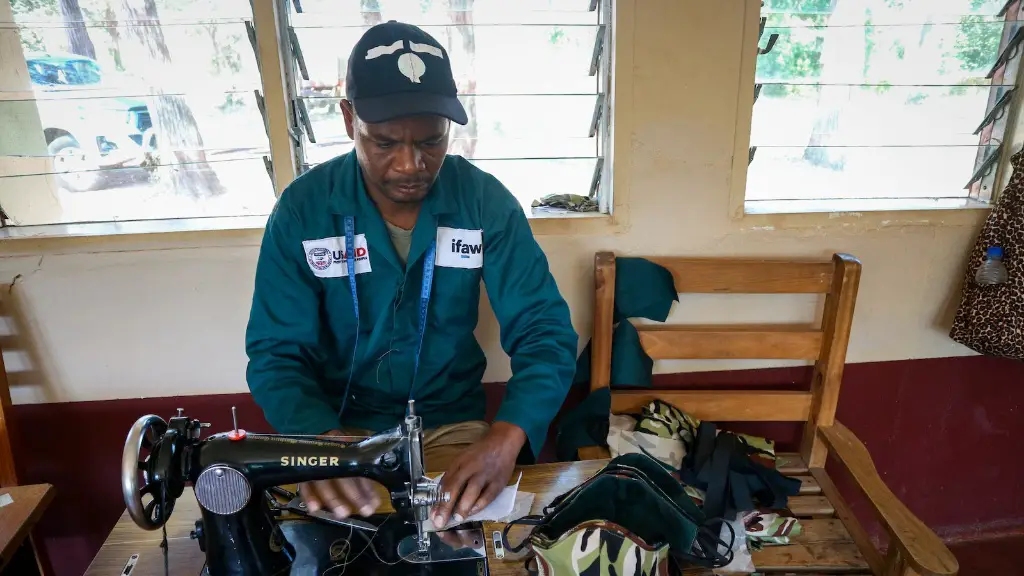Introduction
A handheld sewing machine is a great tool for anyone who wants a light and portable sewing device. Handheld sewing machines come in a variety of sizes and functions, from basic to high-end. They are relatively easy to operate, and can be used for small clothing repairs, embroidery, and hemming. The design of handheld sewing machines usually allows you to perform sewing tasks without the hassle of large and complex sewing machines. Here are some tips on how to use a handheld sewing machine.
Set-Up
The first step in using a handheld sewing machine is to read the instruction manual carefully. It will provide step-by-step instructions on how to properly set up and operate the machine. Make sure that the handle is free of any obstructions or hazards, and insert the bobbin as instructed in the manual. Thread the needle and if the machine has a power supply, plug it in and turn it on.
Do A Test Run
Once you have set up the machine, do a test run. First, thread a piece of scrap fabric through the machine to test the tension of the needle. Set the stitch length to the correct length for the kind of fabric you are using. Slow down the speed and practice on the fabric until you are comfortable with the machine and threading. Once you are comfortable with the handling of the machine and the stitching, you can use it for other sewing tasks.
Stitching
One of the great features of a handheld sewing machine is its versatility. Most handheld machines can be used for a wide variety of tasks, including: mending, embroidery, hemming, and even free-motion quilting. Ensure that when stitching with a handheld sewing machine, the fabric should always be held securely and not forced against the needle. Move the fabric slowly and make sure that the needle is always inserted in the same direction.
Presser Feet And Accessories
Most handheld sewing machines come with a range of presser feet and accessories, depending on the model. The presser feet help facilitate the stitching process by providing a flat surface that the fabric can travel over, allowing for even stitching. Different types of presser feet are available, depending on the type of stitch that you want to create. For example, a zigzag foot is used for zigzag stitches, while a zigzag foot and cording foot can be used to create a decorative edge.
Speed And Threading
Sewing machines vary considerably in speed levels, ranging from slow to fast. A good rule of thumb is to start off sewing at a slow speed and then gradually increase the speed as you become more confident in your ability to control the machine. Additionally, when threading the machine, make sure that the thread is running smoothly and not tangled up. This will help to ensure that the fabric is stitched properly and to prevent jams or snags.
Care And Maintenance
Just like any other machine, regular care and maintenance is necessary to keep a handheld sewing machine functioning correctly. Be sure to regularly oil the parts that need lubrication, as this will help to keep them running smoothly and efficiently. Additionally, clean out any lint or debris that may accumulate in the internal parts of the machine, as this will help to keep it running at peak performance.
Troubleshooting
It is inevitable that every machine will experience some kind of issue at some point. If something goes wrong with your sewing machine, the first thing to do is to refer to the instruction manual and troubleshoot any issues. Common issues such as jammed needles, broken threads, and skipped stitches can all be solved by following the instructions in the manual. If the problem persists, take the machine to a professional and have it checked.
Convenience
A handheld sewing machine is incredibly convenient, as it is small enough to fit into a handbag or suitcase. This makes it ideal for people who are always on-the-go, such as students and travellers. Additionally, a handheld sewing machine can be used for simple projects, such as hemming and mending, without having to lug around a larger machine.
Portability
The main benefit of a handheld sewing machine is its portability. While larger machines require a considerable amount of space, a handheld sewing machine can be easily taken wherever you go. This means that you can take your machine to classes, on vacation, or to a friend’s house for some sewing fun.
Price
Another great benefit of a handheld sewing machine is the price. They are generally much cheaper than larger, full-sized machines and can be purchased at a range of prices, depending on the features and function. Handheld sewing machines are a great choice for anyone who needs a small and portable machine at an affordable price.
Conclusion
Handheld sewing machines are a great tool for anyone who needs a light and portable sewing device. They come in a variety of sizes and functions, and are relatively easy to use. With a few tips and tricks, you can easily master the art of using a handheld sewing machine for small clothing repairs, embroidery, and hemming.



